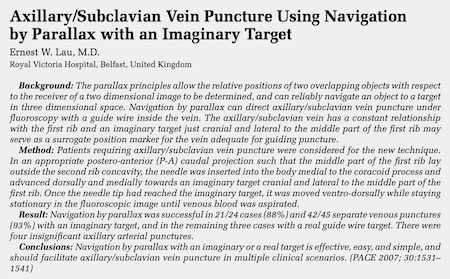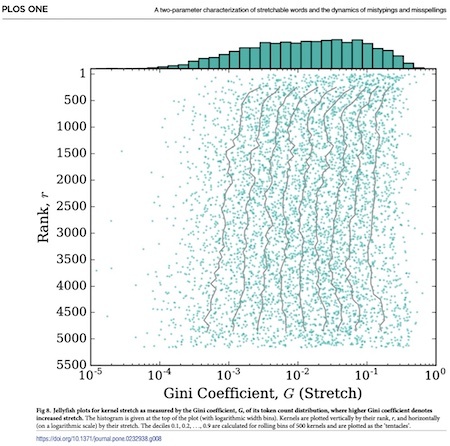Marc Abrahams's Blog, page 60
February 1, 2022
Podcast Episode #1087: “Modes of Cat-Human Communication”
The Ig Nobel Prizes honor achievements that make people LAUGH, then THINK.
In the Ig Informal Lectures, some days after the ceremony, the new Ig Nobel Prize winners attempt to explain what they did, and why they did it. We released these lectures one at a time.
In Podcast Episode #1087, Marc Abrahams presents the 2021 Ig Nobel Prize for Biology winners Susanne Schötz, Robert Eklund, and Joost van de Weijer. They received the prize for analyzing variations in purring, chirping, chattering, trilling, tweedling, murmuring, meowing, moaning, squeaking, hissing, yowling, howling, growling, and other modes of cat–human communication.
REFERENCE: “A Comparative Acoustic Analysis of Purring in Four Cats,” Susanne Schötz and Robert Eklund, Proceedings of Fonetik 2011, Speech, Music and Hearing, KTH, Stockholm, TMH-QPSR, 51.
REFERENCE: “A Phonetic Pilot Study of Vocalisations in Three Cats,” Susanne Schötz, Proceedings of Fonetik 2012, Department of Philosophy, Linguistics and Theory of Science, University of Gothenburg, Sweden.
REFERENCE: “A Phonetic Pilot Study of Chirp, Chatter, Tweet and Tweedle in Three Domestic Cats,” Susanne Schötz, Proceedings of Fonetik 2013, Linköping University, Sweden, 2013, pp. 65-68.
REFERENCE: “A Study of Human Perception of Intonation in Domestic Cat Meows,” Susanne Schötz and Joost van de Weijer, Proceedings of the 7th International Conference on Speech Prosody, Dubin, Ireland, May 20-23, 2014.
REFERENCE: “Melody in Human–Cat Communication (Meowsic): Origins, Past, Present and Future,” Susanne Schötz, Robert Eklund, and Joost van de Weijer, 2016.
The video for this lecture—graphs, charts and all—can be found online at www.IMPROBABLE.com.
Seth Gliksman, Production Assistant
Available on Spotify, Apple Podcasts, Overcast, Google Podcasts, AntennaPod, BeyondPod and elsewhere!
January 31, 2022
LEGO sets as investment assets [study]
This is the first study to investigate the investment properties of LEGO as an alternative asset class from micro- and macro-financial perspectives that overcomes many survivorship bias limitations prevalent in earlier research.
Explains author Savva Shanaev of Northumbria University, Newcastle, UK, in a 2020 paper for the Journal of Risk Finance, Volume 21 Issue 5.
The research found that between 1966 and 2018, those investing in LEGO sets would have gained a modest 1.20% inflation-adjusted return per annum.
However, the defensive properties of LEGO are considerable, as including 5%–25% of LEGO in a diversified portfolio is beneficial for investors with varying levels of risk aversion.
See : Children’s toy or grown-ups’ gamble? LEGO sets as an alternative investment
January 29, 2022
“We Did Not Know Then What Surprises Awaited Us”
Many years ago, T.C. Poulter revealed some loud surprises from Antarctica, in the study “Arctic and Antarctic Acoustics,” T.C. Poulter, Stanford Research Institute Biological Sonar Lab, 1966. Poulter reports:
…first observed in the Antarctic in 1934 during the construction of a tunnel through the very porous, coarsely crystalline snow for communication during the winter night between the buildings in camp and the magnetic observatory. This 30-inch wide tunnel was constructed by cutting snow blocks from the solidified snow, leaving a trench about 30 inches wide and 4 feet deep. The blocks which were cut from this trench were laid up along the side of the trench to form the upper half of the walls of the tunnel, and large snow blocks were laid across the top. The tunnel, so constructed, rapidly drifted over and formed a very serviceable passageway.
With one man at each end of a 20-foot section of the completed tunnel, it was discovered that it was almost impossible for them to talk to each other. After experimenting for some time with the acoustical phenomena of this section of tunnel, they discovered that they could hear the sound of a working party using snow saws and digging in the hard snow with shovels, and also the noise of the snow crunching under their feet as they walked about. Upon investigating no one was even near, but upon stepping back into the tunnel, the sounds were unmistakable. A more careful inspection revealed that the noise was coming from a group of men who were digging in the snow to anchor a plane more than 200 yards away. This was very encouraging, for if the energy traveled that well through the snow, we should have no difficulty in getting some excellent seismic records. We did not know then what surprises awaited us when we tried our first seismic work.
BONUS: This info about Antarctic sound is not specific to, nor is is specifically (or perhaps even) from the Antarctic Sound.
January 28, 2022
Axillary/Subclavian Vein Puncture Using Navigation by Parallax with an Imaginary Target
This study about Axillary/Subclavian Vein Puncture Using Navigation by Parallax with an Imaginary Target added significantly to the world’s stock of knowledge about Axillary/Subclavian Vein Puncture Using Navigation by Parallax with an Imaginary Target:
“Axillary/Subclavian Vein Puncture Using Navigation by Parallax with an Imaginary Target,” Ernest W. Lau, Pacing and Clinical Electrophysiology, December 2007, vol. 30, no. 12, pp. 1531-1541.
(Thanks to Dany Adams for bringing this to our attention.)
January 27, 2022
Hitchhiker’s Guide to Brain Science on Planet Earth
What will the brain research community thing about “A Hitchhiker’s Guide to Brain Science on Planet Earth” (read the article free, here online)?
Though this curious piece of writing does not explicitly explore ice cream, it is a featured part of the special ICE CREAM issue (volume 28, number 1) of the magazine, Annals of Improbable Research.
January 26, 2022
Tidying After the Move
As we tidy up, having moved the entire Improbable site to a new host, please pardon our smattering of dead links, detritus, and well-aged-whatnot. Most of the big parts are gamboling, but it might take a while to rehab some of the vast archival tunnels, galleries, and wormholes accumulated over three decades.
Stretchable Words and the Dynamics of Mistypings and Misspellings
Loooooooooooooooook, if you like, at this study that explores stretchable words:
“Hahahahaha, Duuuuude, Yeeessss!: A Two-Parameter Characterization of Stretchable Words and the Dynamics of Mistypings and Misspellings,” Tyler J. Gray, Christopher M. Danforth, and Peter Sheridan Dodds, PLoS ONE, vol. 15, no. 5, 2020, e0232938.
This graphic from the study perhaps makes clear the main thesis:
The authors, at the University of Vermont, explain:
Stretched words like ‘heellllp’ or ‘heyyyyy’ are a regular feature of spoken language, often used to emphasize or exaggerate the underlying meaning of the root word…. In this paper, we examine the frequency distributions of ‘stretchable words’ found in roughly 100 billion tweets authored over an 8 year period. We introduce two central parameters, ‘balance’ and ‘stretch’, that capture their main characteristics, and explore their dynamics by creating visual tools we call ‘balance plots’ and ‘spelling trees’.
Here’s video of the first (Improbable) Conversation: Cats/Liquids/Language
Here’s recorded video of last week’s event, the first in a collaborative series by The Conversation and Improbable Research. The goal in these: Two researchers, in different fields, explore each other’s worlds a little bit.
“(Improbable) Conversation: Physics and Psychology of Cats“, with physicist (and Ig Nobel Prize winner, for exploring the question “Can a Cat Be Both a Solid and a Liquid?”) Marc-Antoine Fardin, and psycholinguist (and inventor of the Wug Test) Jean Berko Gleason.
January 25, 2022
Icky Cutesy Lettuce Lego, Dog
“Icky Cutesy Research: Lettuce Lego, Dog” (read the article free, here online) is a featured article in the special ICE CREAM issue (volume 28, number 1) of the magazine, Annals of Improbable Research.
[image error]
January 24, 2022
Recent Progress in Blancmange Studies
Cold, wet, and wobbly though it may be, the blancmange has not been ignored by academia. Many of its aspects – culinary, historical, technical, sensory, and mathematical – have been the subject of scholarly explorations. Here are some example studies :
● From Fast to Feast: Analyzing the Ubiquitous “White Dish” Called Blancmange by Erin Sunshine Allaire-Graham and Deborah Krohn.
● Blancmange with radioprotective fillers by Kukushkina O.M. and Arsenyeva T.P.
● Blancmange by Sheryl Boyle
● Riemann-Liouville Fractional Calculus of Blancmange Curve and Cantor Functions by Srijanani Anurag Prasad (from which the illustration is taken)
Marc Abrahams's Blog
- Marc Abrahams's profile
- 14 followers





